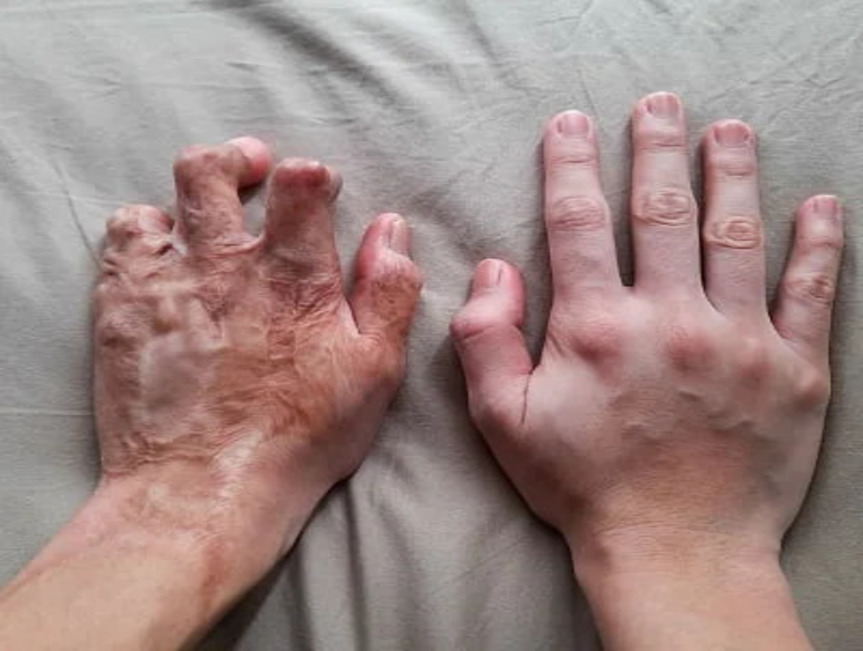Burn Surgery
Whom to contact in case of burns?
Burns are very common in day to day life and if you sustain any kind of burn, you should contact a qualified plastic surgeon
What are the types of burns?
- Flame burn
- Scald burn
- Electric burn
- Chemical burn
- Radiation burn
What are the early complications of burn
- Open wound
- Infection
- Bleeding
What are the late complications of burn
- Scarring
- Contracture
Acute Burn Surgery
- Timing: Performed immediately after the burn injury.
- Care Team: Managed by trauma surgeons and general surgeons specializing in acute burn care. Complex cases may require plastic surgeons for both inpatient and outpatient care.
- Settings: Severe burns are treated at verified burn centers; smaller burns may be managed on an outpatient basis.
Reconstructive Burn Surgery
- Timing: Conducted after initial burn wounds have healed.
- Goals: Aims to improve both function and cosmetic appearance of burn scars by altering scar tissue.
- Relationship: Often involves a long-term relationship between the patient and surgeon, as treatments can span several years, especially for young patients.
Benefits of Reconstructive Burn Surgery
- Functional Improvement: Helps regain motion in areas where scarring limits movement (e.g., neck, shoulder, hands, legs).
- Cosmetic Enhancement: Improves the appearance of scars, especially on the face, and addresses issues like thick, wide, or discolored scars.
Options for Reconstructive Burn Treatment
- Non-Operative Therapies:
- Scar massage
- Pressure garments
- Topical therapies
- Rehabilitation, particularly for hand burns and scars
- Surgical Options:
- Scar Release Procedures: Releases tight scar tissue, followed by wound closure techniques such as:
- Skin grafts
- Z-plasty (skin rearrangement)
- Skin donor flaps
- Tissue Expansion: Used as an alternative to skin grafting, particularly effective for face, neck, arms, hands, and legs.
- Scar Release Procedures: Releases tight scar tissue, followed by wound closure techniques such as:
Preparing for Reconstructive Burn Treatment
- Consultation:
- Provide a complete medical history.
- Undergo a physical examination.
- Discuss risks and complications with the surgeon.
- Pre-Operative Instructions: Includes guidelines on skin cleansing, dietary restrictions, smoking cessation, and medication management.
Post-Surgery Care
- Follow-Up: Crucial for healing and achieving optimal outcomes. Includes follow-up appointments to monitor progress and address any concerns.
- Dressings and Splints: Varies depending on the procedure. Skin grafts may require “bolster” dressings, while smaller operations might need soft dressings.
- Rehabilitation: Physical or occupational therapy might be necessary to restore function, potentially involving splints or casts and prescribed exercises.
For those considering reconstructive burn surgery, an initial consultation with a plastic surgeon is essential to develop a personalized treatment plan that addresses specific needs and goals.
Schedule a Consultation
Ready to take the next step? Contact us today to schedule a consultation and start your journey towards a more confident you.
- Aesthetic Surgery
- Burn Surgery
- Reconstructive Surgery
- Cleft Surgery
- Craniomaxillofacial Surgery
- Anti-wrinkle Treatment
- Non Surgical Injectables
- Anti Ageing Treatment
- Facial Rejuvenation
- Blepharoplasty (Eyelid Surgery)
- Hair Transplant
- Breast Augmentation
- Liposuction
- Gynaecomastia (male breast enlargement )
- Rhinoplasty
